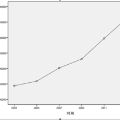Dynamic Time Warping (DTW) is a popular time series distance measure that aligns the points in two series with one another. These alignments support warping of the time dimension to allow for processes that unfold at differing rates. The distance is the minimum sum of costs of the resulting alignments over any allowable warping of the time dimension. The cost of an alignment of two points is a function of the difference in the values of those points. The original cost function was the absolute value of this difference. Other cost functions have been proposed. A popular alternative is the square of the difference. However, to our knowledge, this is the first investigation of both the relative impacts of using different cost functions and the potential to tune cost functions to different tasks. We do so in this paper by using a tunable cost function {\lambda}{\gamma} with parameter {\gamma}. We show that higher values of {\gamma} place greater weight on larger pairwise differences, while lower values place greater weight on smaller pairwise differences. We demonstrate that training {\gamma} significantly improves the accuracy of both the DTW nearest neighbor and Proximity Forest classifiers.
翻译:动态时间规整的代价函数参数化及其在时间序列分类中的应用
动态时间规整(Dynamic Time Warping,DTW)是一种流行的时间序列距离度量方法,它将两个序列中的点进行对齐。这些对齐点支持对时间维度进行扭曲,以允许不同速率展开的过程。该距离是一系列可行的时间维度扭曲下所得到的对齐代价之和的最小值。对齐代价是该对点之间的值差异的函数。原始的代价函数是这种差异的绝对值,已经提出其他代价函数,如差异的平方。然而,本文是首次探讨使用不同代价函数的相对影响及其调整不同任务代价函数的潜力。我们使用可调参数γ的可调代价函数λγ进行了研究。我们表明,γ值较高更强调较大的成对差异,而γ值较低更强调较小的成对差异。我们证明了训练γ显著提高了DTW最近邻和Proximity Forest分类器的准确性。




